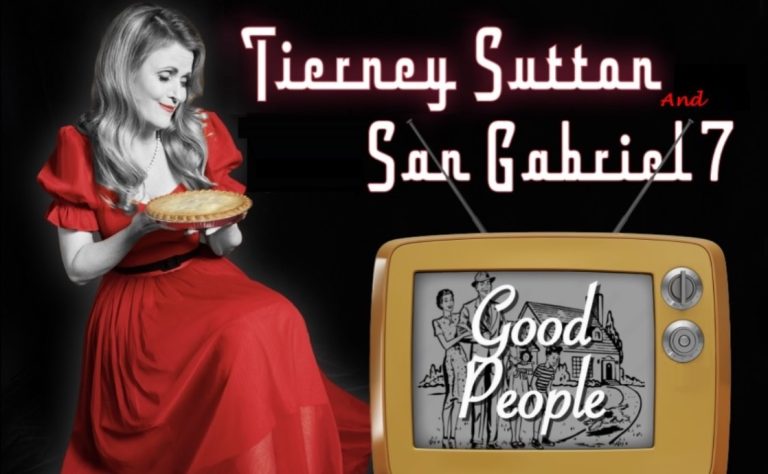In recent years, the intersection of art and social consciousness has taken center stage, and within this realm emerges Tierney Sutton’s poignant song, “Good People.” This composition not only exemplifies the power of music as a vehicle for change but also resonates deeply with the Bahá’í teachings that advocate for unity, justice, and the eradication of prejudice in all forms, particularly racism. By delving into the profound themes of this song, one can discern a promise of shifting perspectives and igniting curiosity, thereby encouraging a reevaluation of societal norms regarding race.
The Bahá’í Faith emphasizes the oneness of humanity, a principle that asserts the essential unity and equality of all people without distinction of race, ethnicity, or nationality. In the tutorial teachings, it is articulated that “the earth is but one country, and mankind its citizens.” This foundational belief forms the backdrop against which Sutton’s “Good People” can be appreciated. The song provocatively confronts the malignancy of racism, prompting listeners to reflect on their own biases and the societal structures that perpetuate such insidious attitudes.
At the heart of “Good People” lies the compelling notion that moral integrity and social justice are inextricably linked. This symbiosis encourages individuals to wrestle with their own understandings of goodness and moral behavior. Sutton’s lyrics invite the listener to consider what it means to be a ‘good’ person in a world rife with discrimination. As one explores the verses, the narrative unveils a stark juxtaposition between the ideal of kindness and the brutal realities of prejudice that persist in contemporary society.
Another intricate layer of the song includes the exploration of personal responsibility. The Bahá’í teachings posit that true individuals must be proactive in their social environments. This encompasses the importance of challenging injustice, no matter how uncomfortable it may be. Lyrics that ponder the inaction of individuals when faced with overt racism resonate strongly with the Bahá’í belief in the necessity for active engagement in the promotion of justice. Sutton’s melodic interrogation becomes not merely an artistic endeavor but a clarion call for unwavering solidarity with those marginalized and oppressed.
Furthermore, the song’s emotionally charged narrative serves a dual purpose: it not only raises awareness but also fosters empathy. This is a pivotal aspect of the Bahá’í teachings, which encourage followers to develop an expansive empathy that transcends personal ties. Sutton’s work resonates with this ideal, as it cultivates a profound sense of shared humanity. By invoking vulnerability through her voice and lyrics, the listener is urged to confront the discomfort of acknowledging their own complicity in systemic racism. This blend of empathy and accountability incites a shift towards a more compassionate outlook.
Moreover, Sutton’s artistic expression encapsulates an array of musical influences that reflect the diversity of the human experience. The amalgamation of various genres in her song not only exemplifies the richness of cultural interplay but also aligns seamlessly with the Bahá’í principle of appreciating diverse contributions to the collective fabric of humanity. This celebration of diversity prompts listeners to cultivate curiosity about different cultures and experiences, which is pivotal in dismantling preconceptions and biases.
As one delves deeper into the themes woven throughout “Good People,” it becomes evident that the song transcends mere entertainment; it is imbued with a purpose that beckons listeners to venture into the uncomfortable territory of self-examination. This notion of discomfort is pivotal in the evolution of societal attitudes towards race. The Bahá’í Faith encourages followers to embrace discomfort as a catalyst for transformation, urging individuals to peel back the layers of ignorance and complacency that often perpetuate prejudice.
An enthralling aspect of Sutton’s narrative is its nonlinear approach to storytelling, which mirrors the complexities of racial dynamics in real life. Through evocative vignettes and poignant imagery, the song effectively illustrates the multifaceted nature of human experiences affected by racism. This multifarious portrayal aligns with the Bahá’í understanding that human psychology and social behavior cannot be distilled into simplistic categorizations. Each person’s journey towards understanding racism is distinct, thereby necessitating a mosaic of narratives and experiences that help foster a deeper comprehension of the collective plight against racial injustice.
At its core, “Good People” effectively embodies a philosophical inquiry aligned with Bahá’í teachings: it asks not simply what constitutes goodness, but rather how individuals can mobilize their understanding of goodness to effect tangible change. This inquiry is reflective of the Bahá’í engagement in spiritual activism, wherein moral ideals must be coupled with action within the community. Sutton’s melodic contemplation thus becomes a transformative journey for listeners—an invitation to transcend the rhetoric of passivity and engage decisively in the fight against injustice.
In conclusion, Tierney Sutton’s song “Good People” stands as a compelling artistic contribution that resonates deeply with Bahá’í teachings surrounding unity, justice, and the global struggle against racism. By engaging with its themes, listeners are not only afforded an opportunity to reflect on their own beliefs and behaviors but are also prompted to actively participate in a broader dialogue on racial equity and social justice. The promise of shifting perspectives and piquing curiosity encapsulated in her work underscores the vital role that art plays in challenging societal norms and fostering a more just world. Thus, “Good People” transcends the boundaries of music, becoming a beacon of hope and an instrument for change in the collective endeavor toward racial harmony.
